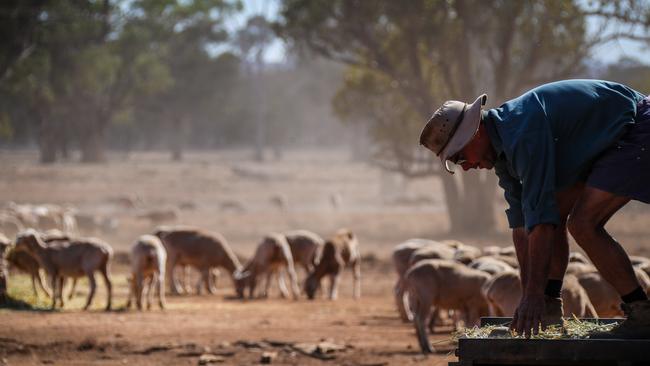Federal farm loans not so cheap: Interest rates tied to surging bond rate
The Federal Government’s Regional Investment Corporation has tied the interest rate it charges farmers to surging 10-year bond rates.

Interest rates on a raft of Federal Government farm and drought loans are forecast to more than double by the end of next year, potentially causing pain for farmers.
Guidelines on the Federal Government’s Regional Investment Corporation states its AgriStarter, AgriBiz, Farm, drought and even plantation loans’ interest rates are tied to the Commonwealth 10-year bond rate, which has risen from 1.1 per cent last August to 3.5 per cent this week.

The RIC guidelines state: “we will review and revise the interest rate if necessary in accordance with material changes to the Commonwealth 10-year bond rate, where a material change is a movement of more than 10 basis points (0.1 per cent)”.
“Any interest rate change will be effective from 1 February and or 1 August each year, as applicable.”
The RIC increased its interest rate to 2.31 per cent in February, but since then the Commonwealth 10-year bond rate has surged to 3.5 per cent.
Global markets are now forecasting Australian Government bond rates could reach more than 5 per cent by June next year, raising concerns about what impact this will have on RIC borrowers.
RIC engagement executive manager Julia Brown confirmed the corporation reviewed its rates every six months in line with the Commonwealth 10-year bond rate, but that any increase was applied in arrears.
“In August it’s the changes only up to May averaged over the 6 months,” Ms Brown said. “So if in fact the bond rates are say 5 per cent by June next year, the rate applied is based on the average change, not the rate as at (that date).”
What that means to RIC borrowers remains unclear, but dairy industry leader Graham Forbes warned tying these loans to the Commonwealth bond rate may leave farmers “in a very vulnerable position”.
He said farmers would struggle to service higher interest rates together with surging input costs, which had reached “unprecedented levels in the last 6-12 months – fuel up 100 per cent, power up 160 per cent, urea up 200 per cent (feed) grains and protein meal up $100-$200 a tonne just to name a few.”
NAB agribusiness senior economist Phin Ziebell said that while interest rate rises would have an impact on residential housing and rural living property markets, the greater risk to farmers was rising fertiliser and other input costs.
In a recent commodity report Mr Ziebell and his colleagues also highlighted that commodity prices were starting to ease.
The NAB team pointed out that young cattle prices have been on a generally downward trajectory since late January, albeit starting from record levels, lamb prices are below 2021 levels and global dairy trade auctions have been coming off record levels and it is almost impossible to predict what will happen to grain prices in the wake of the Russian invasion of Ukraine.




